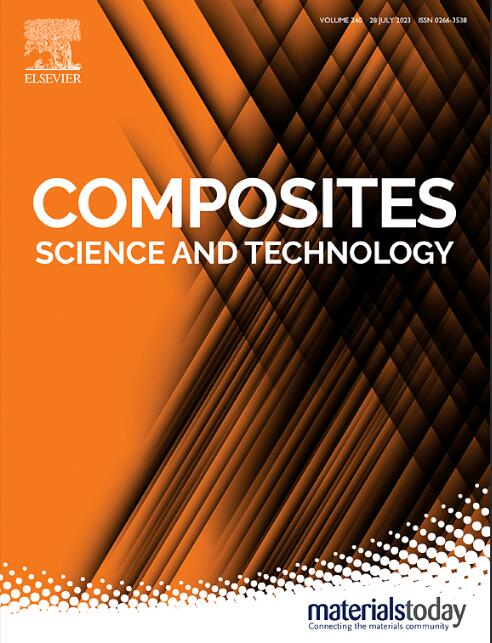雷击下CFRP复合材料动态响应与损伤的实验与建模:电-热-力耦合分析
IF 8.3
1区 材料科学
Q1 MATERIALS SCIENCE, COMPOSITES
引用次数: 0
摘要
雷击复合材料的机理涉及复杂的多场相互作用。本研究提出了一个电-热-力耦合模型,用于预测碳纤维增强聚合物(CFRP)复合材料在雷击下的动态响应和损伤。利用多场理论,建立了电-热-机械有限元模型进行仿真。在热分析中,该模型考虑了树脂分解过程中的吸热和热解气体扩散的传热,并将热解气体的过滤作用纳入了冲击机械损伤的评估中。建立了热弹性本构关系,包括热损伤和机械损伤引起的刚度矩阵退化。此外,还进行了人工雷击试验,利用激光传感器系统测量CFRP层合板的动态响应。结果表明,在最大动态位移、损伤面积和深度方面的有限元预测与实验结果非常吻合,从而证明了所提出的电-热-机械有限元模型的有效性。详细讨论了应力波的传播、热解气的形成及其所造成的破坏。通过我们的电-热-机械有限元模型证明,树脂热解和气体过滤是CFRP复合材料雷击损伤的主要原因。最后,验证了该模型在高电流峰值雷击下的有效性。本文章由计算机程序翻译,如有差异,请以英文原文为准。
Experimental and modelling of dynamic response and damage of CFRP composites under lightning strike: coupled electrical-thermal-mechanical analysis
The mechanism by which lightning strikes composite materials involves complex multi-field interactions. This study presents a coupled electrical-thermal-mechanical model designed to predict the dynamic responses and damage of carbon fiber reinforced polymer (CFRP) composites subjected to lightning strikes. Multi-field theories were drawn on and implemented into an electrical-thermal-mechanical finite element (FE) model for simulation. In its thermal analysis, the model incorporated heat absorption during resin decomposition and heat transfer via pyrolysis gas diffusion, while the filtration of pyrolysis gases was factored into the evaluation of impact-induced mechanical damage. A thermo-elastic constitutive relationship was established, including stiffness matrix degradation due to both thermal and mechanical damages. Additionally, artificial lightning strike tests were conducted, utilizing a laser sensor system to measure the dynamic response of CFRP laminates. The results indicate that FE predictions in terms of maximum dynamic displacement, damage area, and depth align closely with experimental findings, thereby demonstrating the effectiveness of the proposed electrical-thermal-mechanical FE model. The propagation of stress waves as well as the formation of pyrolysis gases and their resultant damage were discussed in detail. It was determined that resin pyrolysis and gas filtration are the primary contributors to damage induced by lightning strikes in CFRP composites, as demonstrated through our electrical-thermal-mechanical FE model. Finally, the effectiveness of our FE model especially subjected to lightning strikes with a high current peak was demonstrated.
求助全文
通过发布文献求助,成功后即可免费获取论文全文。
去求助
来源期刊

Composites Science and Technology
工程技术-材料科学:复合
CiteScore
16.20
自引率
9.90%
发文量
611
审稿时长
33 days
期刊介绍:
Composites Science and Technology publishes refereed original articles on the fundamental and applied science of engineering composites. The focus of this journal is on polymeric matrix composites with reinforcements/fillers ranging from nano- to macro-scale. CSTE encourages manuscripts reporting unique, innovative contributions to the physics, chemistry, materials science and applied mechanics aspects of advanced composites.
Besides traditional fiber reinforced composites, novel composites with significant potential for engineering applications are encouraged.
 求助内容:
求助内容: 应助结果提醒方式:
应助结果提醒方式:


